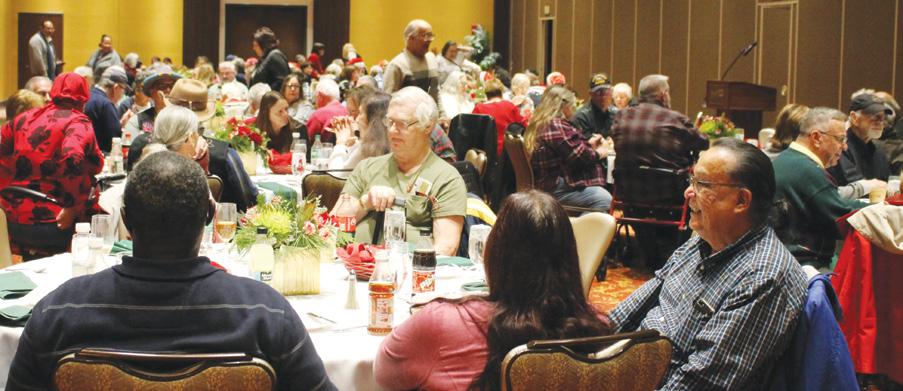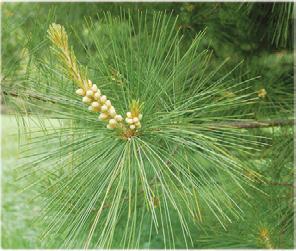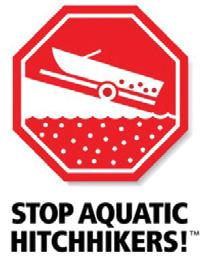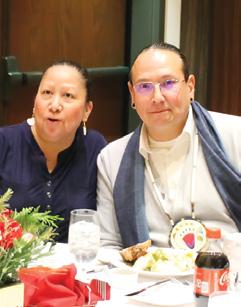
4 minute read
RODGERS LAKE PAVILION
Enjoy Earth Day and Arbor Day activities and education, giveaways, and a celebratory end of sugar season feast.
What’s that Non-Native Species? Zebra mussel (Dreissena polymorpha)
Populations of zebra mussels (Dreissena polymorpha) were first identified in the Great Lakes around 1988. The zebra mussel is so named because of its’ zebra-type stripes on the shells. Zebra mussels are native to Eastern Europe and Western Russia and arrived in the Great Lakes region through the ballast water of freighters. Zebra mussels are prolific, with a single female able to lay over one million eggs in a single year.
These mussels have become widely established in the Great Lakes region and inhabit many inland lakes, streams, and rivers. This number is growing every year due to inadvertent movement of zebra mussels between waterbodies. Zebra mussels can reside in bilge water and can quickly attach to any surface that is under water, including live native clams and crayfish.
The burden of zebra mussels can cause the death of these native species. For this reason, it is very important to fully drain your boat, remove any visible hitchhikers from the boat or trailer, and wash the boat and trailer when moving from one lake to another. Zebra mussels have had catastrophic effects including the alteration of aquatic food webs, causing an increase in bioaccumulation of pollutants, causing cut hazards to swimmers, and clogging up piping. Additionally, they impact local communities and governments by costing well over $1 billion per year in addressing issues and preventing future issues that involve zebra mussels.
What’s that Edible Plant? Eastern White Pine (Pinus strobus)


With it being cold and flu season, a great medicinal food is provided by the eastern white pine (Pinus strobus). Eastern white pine is considered one of the best choices for producing pine needle tea. Pine needle tea can be made from most pine needles, however, be sure to positively identify your pine before harvesting. The eastern white pine has needles that occur in clusters of five.
The tea extracted from pine needles is high in vitamin C and A, making it a great remedy for fighting colds and boosting immunity. Newly growing needle clusters, bright green in color, are the best to harvest for tea.
To make the tea collect ½ cup to 1 cup of needles. Remove the brown paper and tip of the needle bunch. Cut the needles into small pieces. Bring 24 ounces of water to a boil. Add pine needles and simmer for 20 minutes, however, the needles can be steeped for up to two days. Strain out the needles, sweeten to taste, and drink warm or cold. Pregnant women should not drink this tea. Another edible provided by eastern white pine is their pollen. Eastern white pine male pollen cones can be collected just prior to releasing pollen and the pollen can be used in baking (pancakes) and in smoothies. As with any new edible or medicinal, please ensure that you have a positive identification before use and utilize in small quantities at first to make sure there are no adverse reactions.
Be Heart Aware
Heart disease is the leading cause of death for men, women, and people of most racial and ethnic groups in the United States.
• One person dies every 36 seconds in the United States from cardiovascular disease.
• About 659,000 people in the United States die from heart disease each year—that’s 1 in every 4 deaths.
• Heart disease costs the United States about $363 billion each year from 2016 to 2017. This includes the cost of health care services, medicines, and lost productivity due to death.
Coronary Artery Disease
• Coronary heart disease is the most common type of heart disease, killing 360,900 people in 2019.
• About 18.2 million adults age 20 and older have CAD (about 6.7%).
• About 2 in 10 deaths from CAD happen in adults less than 65 years old.

Heart Attack
• In the United States, someone has a heart attack every 40 seconds.
• Every year, about 805,000 people in the United States have a heart attack. Of these, ‒ 605,000 are a first heart attack
‒ 200,000 happen to people who have already had a heart attack About 1 in 5 heart attacks is silent—the damage is done, but the person is not aware of it.
Risk for Heart Disease
High blood pressure, high blood cholesterol, and smoking are key risk factors for heart disease.
Several other medical conditions and lifestyle choices can also put people at a higher risk for heart disease, including:
• Diabetes
• Overweight and obesity
• Unhealthy diet
• Physical inactivity
• Excessive alcohol use
Symptoms of a Heart Attack
• Chest pain or discomfort. The discomfort can feel like uncomfortable pressure, squeezing, fullness, or pain.
• Feeling weak, light-headed, or faint. You may also break out into a cold sweat.
• Pain or discomfort in the jaw, neck, or back.
• Pain or discomfort in one or both arms or shoulders.
• Shortness of breath. This often comes along with chest discomfort, but shortness of breath also can happen before chest discomfort.
• Call 9-1-1 if you notice symptoms of a heart attack. Resources for Individuals and Patients are available at cdc.gov
Holiday Fun for the Elders




It was a packed house for the 2022 Elders Holiday Party held at Four Winds Silver Creek Event Center in New Buffalo. Many showed up to enjoy friends, fun, food, and free play. The Elder’s Council also distributed gift cards to those in attendance.


Stay tuned for details on the next Elder’s Social happening at the Community Center on Thursday, February 16. The fun begins at 11 a.m.
pokégnek bodéwadmik pokagon health services + kowabdanawa odë kė (dnr) + education
Community Outreach, Kowabdanawa odë kė, and the Department of Education invite you to honor the newest members of our tribe.
Can you climb Mount Everest?





